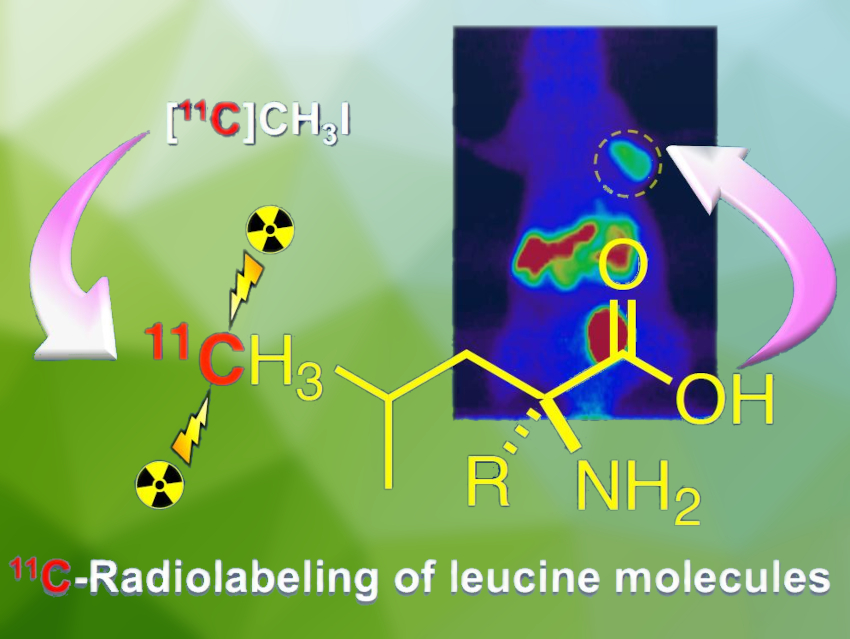The amino acid leucine plays an important role in regulating biological functions. However, little information is available on its pharmacokinetics and dynamics in vivo. If carbon-11 (11C), a short-lived radionuclide with a half-life of 20.4 min, could be incorporated into the carbon framework of leucine, positron emission tomography (PET) studies could provide valuable information on leucine in the living body.
Hirotaka Onoe, Kyoto University, Japan, Yasuyoshi Watanabe, Hisashi Doi, RIKEN Center for Biosystems Dynamics Research and RIKEN Center for Life Science Technologies, Kobe, Japan, and colleagues have developed an efficient 11C-radiolabeling method for leucine molecules and used the labeled leucine derivatives in in-vivo PET imaging in mice. The team incorporated 11C at the 5-position of leucine using a Pd0-mediated 11C-methylation and a microfluidic hydrogenation. They used the same method for 11C-radiolabeling L-α-methylleucine.
Both synthesized PET tracers showed low Pd impurities and satisfied the criteria for human use. PET studies in mice confirmed 11C-radiolabeled L-α-methylleucine could be a useful tracer to visualize tumors. As D-leucine has recently drawn clinical attention for epilepsy treatment, the team also aims to investigate 11C-radiolabeled D-leucine derivatives.
- Synthesis of L-[5-11C]Leucine and L-α-[5-11C]Methylleucine via Pd0-mediated 11C-Methylation and Microfluidic Hydrogenation: Potentiality of Leucine PET Probes for Tumor Imaging,
Shuhei Takataki, Tsuyoshi Tahara, Mieko Tsuji, Daiki Ozaki, Nina Shibata, Yoshinobu Hashizume, Masaaki Suzuki, Hirotaka Onoe, Yasuyoshi Watanabe, Hisashi Doi,
ChemMedChem 2021.
https://doi.org/10.1002/cmdc.202100255




